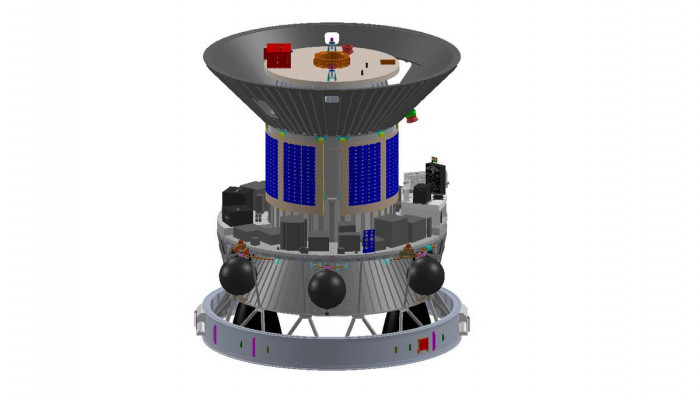ISRO’s POEM-3 accomplishes zero orbital debris mission
- In Reports
- 10:58 AM, Mar 26, 2024
- Myind Staff
On Monday, ISRO announced that its Polar Satellite Launch Vehicle (PSLV) has successfully completed a mission with zero orbital debris, marking it as another significant milestone.
This was achieved on March 21, when the PSLV Orbital Experimental Module-3 (POEM-3) met its "fiery end" through a re-entry into the Earth's atmosphere.
"The PSLV-C58/XPoSat mission has practically left zero debris in orbit," the space agency said.
The operation took place on January 1, 2024. After successfully positioning all satellites into their designated orbits, the final stage of the PSLV was transformed into a 3-axis stabilized platform named POEM-3.
The stage was deorbited from an altitude of 650 km to 350 km, enabling its prompt re-entry, and was passivated to eliminate any residual propellants, thereby reducing the risk of accidental break-up, as stated.
POEM-3 was configured with a total of 9 different experimental payloads to carry out technology demonstrations and scientific experiments on the newly developed indigenous systems. Out of these, six payloads were delivered by NGEs through IN-SPACe. The mission objectives of these payloads were met in a month.
The orbital altitude of the upper stage continued to decay under the influence of natural forces, primarily atmospheric drag with the module (NORAD ID 58695) expected to have impacted the North Pacific Ocean (Lat 6.4 N & Long 158.7 W) on March 21, 2024, at 14:04 UTC (19:34 Hrs. IST).
ISRO stated that the POEM, which acts as a highly cost-effective platform for conducting short-duration space-borne experiments, has opened up new opportunities for academia, startups, and NGEs to test their new payloads.
POEM also incorporates new features such as total avionics in single-chain configuration, industrial-grade components in avionics packages including Mission Management Computer, standard interfaces for electric power, telemetry & telecommand, and new in-orbit navigation algorithms making use of rate-gyro, sun sensor, and magnetometer.
To ensure the successful execution of experiments onboard POEM-3, the body rates were stabilized to less than 0.5 deg/s consistently. Additionally, innovative approaches such as controlled dumping of residual propellant following the main mission were implemented to minimize disturbances caused by passivation.
The Vikram Sarabhai Space Centre (VSSC) has taken the lead in conceptualizing and realizing the POEM by augmenting the 4th stage of PSLV.
PSLV-C58/XPoSat marks the third mission in the series, with the successful execution of POEMs each time. The payload operations were efficiently managed by the spacecraft operations team from the mission operations complex (MOX) at ISRO Telemetry Tracking and Command Network (ISTRAC). Furthermore, ISRO's System for Safe and Sustainable Spacecraft Operations Management (IS4OM) has been continuously monitoring and analysing the orbital decay process.
Till near re-entry, POEM-3 was tracked by ISTRAC ground stations. The Multi-Object Tracking Radar (MOTR) at Sriharikota also tracked the PS4 stage till the morning of March 21. POEM-3 was also supported by other Centres like UR Rao Satellite Centre (URSC), Liquid Propulsion Systems Centre (LPSC) and ISRO Inertial Systems Unit (IISU).
ISRO reiterated its commitment to providing a cost-effective orbital experiment platform. Acknowledging the increasing risk posed by space debris, especially with the proliferation of numerous small satellite constellations, the agency emphasised the significant threat it poses to space operations, including satellite launches, human spaceflight endeavours, and exploration missions.
Aligning with its ethos as a responsible space agency, ISRO vowed to tackle this challenge by enhancing debris tracking systems, innovating technologies for space object deorbiting, and advocating for responsible practices in satellite deployment. Through these efforts, ISRO aims to safeguard orbital environments, ensuring their sustainability for both present and future space missions.
Image source: ISRO







Comments